TOP 10 Most Famous Constellations in the Sky Ranked in 2022
⭐ In the realm of science, constellations in the sky are delineated regions that divide the celestial sphere, devoid of any mythical or fantastical elements. This systematic organization of celestial bodies enables effortless navigation through the expanse of space. Merely acquainting oneself with the expected appearance of the starry sky during a particular time of the year suffices. This regularity was first observed by ancient civilizations, establishing the groundwork for the field of astronomy.
Names and legends were quickly given to the constellations that adorned the night sky, with clusters of stars becoming linked to gods, mythical creatures, and various aspects of human life. However, this system had its flaws and imperfections, as certain stars were assigned to multiple constellations and others were deemed unnecessary in the celestial sphere.
10 renowned star formations in the celestial sphere along with their titles and diagrams
During the 1922 gathering of the International Astronomical Union, the matter of delineating the heavens into various sections was brought up. The Committee officially endorsed 88 constellations. However, only 54 of these can be observed within the borders of Russia, owing to the unique geographic latitude. This article will provide an account of the 10 most prominent and easily recognizable groupings of stars in the firmament, accompanied by corresponding visuals.
1. Dragon (Draco)
Area: Covers 1083 square degrees.
The Draco constellation is known for being one of the largest groups of stars in the sky, spanning an impressive 1083 square degrees. Identifying it accurately can be challenging as there are other more prominent constellations. In the Northern Hemisphere, one should look for the Dragon in the region between the Little and Big Dipper.
The stars that form the Draco constellation are not particularly bright, with a brightness measurement of no more than 6m according to astronomers. In the sky near the Big Dipper, one can observe a long curve with a quadrangle shape at the end. This group of stars is considered to represent the head of the legendary dragon.
The Draco constellation can be observed from May to December, but the best time to study it is during the summer and fall seasons.
The legendary dragon is surrounded by myths and incredible tales, much like the constellation that shares its name. According to legend, this enormous creature dared to challenge the gods residing on Mount Olympus. In her fury, Athena hurled the serpent high into the heavens, where it remains to this day.
2. Cepheus
Area: 588 square degrees.
Cepheus, the constellation, can be found in the Northern Hemisphere. It covers a more modest area of 588 square degrees and boasts 148 visible stars without the need for astronomical instruments. It is situated in close proximity to the Little Bear, making it easily locatable for anyone.
Greek mythology provides an explanation for the origin of the constellation. It is based on the ancient king of Ethiopia, Cepheus, who served as a prototype. However, astronomers argue that the chronology does not align as the constellation formed during later stages of the universe’s development.
3. Centaurus (Centaurus)
Location: Covering an area of 1060 square degrees.
Another constellation that holds a record in terms of its size is Centaurus, covering 1060 square degrees. Unfortunately, those residing in the Northern Hemisphere are unable to witness its beauty.
Located in the Southern Hemisphere, Centaurus is situated along an imaginary line stretching from the Big Dipper to Virgo. In Russia, residents can observe this constellation based on the principle that the more southern the region, the better visibility of Centaurus. However, it is not possible to see the entire constellation in our country. Comprised of numerous bright stars, Centaurus takes on the peculiar shape of a centaur.
In accordance with mythology, the centaur is named Chiron, the son of the renowned god Cronus and the captivating nymph Phyllis. In another legend, the centaur is known as Pholus, who was sent into the heavens by the mighty hero Heracles. Before doing so, Heracles shot Pholus with a poison-filled arrow.
4. Virgo
Area: Covering 1,294 square degrees.
Virgo is the second largest constellation, spanning an impressive 1,294 square degrees in the night sky. It can be found between the constellations of Libra and Virgo, along the celestial equator. One notable aspect of Virgo is its association with the fall equinox.
In ancient celestial maps, Virgo is often depicted as a graceful maiden holding a sheaf of wheat. While this imagery may not be visible to the naked eye, one can easily locate Virgo by looking for its brightest star, Spica. Even without a telescope or other equipment, a total of 171 stars can be seen within Virgo.
Greek mythology also offers an origin story for the constellation. According to the myths, the goddess of justice, Dica, grew disillusioned with humanity and decided to leave them behind, choosing to reside in the sky near the constellation Libra.
5. Hydra
Area: 1303 square degrees.
The constellation Hydra holds the distinction of being the longest, covering an area of 1303 square degrees. It can be found in the Southern Hemisphere.
For those residing in Russia, the best time to observe Hydra is during the spring or late winter. The constellation can only be fully appreciated in the southern latitudes.
Despite not being particularly bright, it is possible to see 229 stars in Hydra with the naked eye. There are several interesting stars in Hydra, such as Xi Hydra, Gamma, Alpha Hydra, and various clusters of scattered stars.
The original inspiration for Hydra was the water serpent. Apollo dispatched his raven to retrieve water, but the raven was gone for a long time. In order to make amends and appease his master, he presented a snake to the god. Apollo then cast a “gift” into the heavens, consisting of a raven and a bowl of water. Ever since, the constellations Hydra and Raven have been observable in the night sky.
Another rendition exists, in which Hydra is depicted as a seven-headed beast that Perseus conquered through his cunning.
Locations: 598 square degrees.
The well-known constellation Cassiopeia can be found in the Northern Hemisphere, providing year-round visibility. However, the optimal viewing time is during the autumn season.
In terms of shape, it closely resembles the letter W. It covers an approximate area of 598 square degrees. The primary structure is formed by 5 highly luminous stars, with an additional 90 stars being visible.
This constellation is named after the wife of the ancient king Kepheus. As a member of the royal family, Cassiopeia is the biological mother of Andromeda. The woman was known for her vanity, which led to her punishment of being tied to a throne. To this day, she continues to orbit around the pole, inverting her position once every day.
7. Pegasus
Locations: Occupying an area of 1121 square degrees
Pegasus, also known as the winged horse, is one of the prominent constellations in the night sky, primarily visible from the Northern Hemisphere. Covering a vast expanse of 1121 square degrees, this constellation can be observed without the need for any astronomical instruments. The optimal time to spot Pegasus is during the early autumn and late summer seasons.
In terms of its shape, Pegasus forms a massive square with an array of stars scattered around it, resembling tentacles. It requires a vivid imagination to envision the mythical winged horse rather than the geometric figure it represents.
Pegasus, the winged horse, holds a significant place in Greek mythology. According to the legends, it emerged from the blood of the Gorgon, whose head was severed by Perseus.
8. Hercules
Locations: Covering an area of 1225 square degrees.
Hercules, the legendary hero of myths, is situated in the Northern Hemisphere. The constellation occupies an approximate area of 1225 square degrees and is widely recognized in the night sky.
The stars forming a trapezoid shape represent the torso of the titan and are the most prominent feature. In Russia, Hercules can be observed in its “full height,” except during the time of lower culmination. It is particularly visible in June.
Originally, the cluster of stars was referred to as Kneeling. An ancient poet named Arat perceived the constellation as a depiction of a suffering husband, although he did not disclose the true cause of his agony.
The ancient astronomers renamed the constellation Hercules in the 5th century BC. It later adopted the modern name Hercules.
9. Ursa Major: The Great Bear
Location: Covers an area of 1280 square degrees.
The Great Bear constellation can be found in the Northern Hemisphere. It is easily recognizable as a dipper-shaped formation, created by several bright stars. With its vast expanse spanning 1280 square degrees, it offers an impressive view to the naked eye, showcasing around 125 stars.
The Big Dipper, also known as an asterism (a distinct group of stars), goes by various nicknames. Additionally, there are other asterisms within the Big Dipper.
Ancient Greek mythology also recounts the appearance of this constellation in the night sky. According to the myth, Zeus transformed the goddess Callisto into a celestial bear to protect her from the wrath of Hera.
10. Ursa Minor: The Little Bear
Area: Covers 256 square degrees.
The Little Bear, also known as Ursa Minor, is a constellation located near the North Pole in the Northern Hemisphere. It is easily identifiable as it is situated next to the Big Dipper. In fact, they are neighboring constellations.
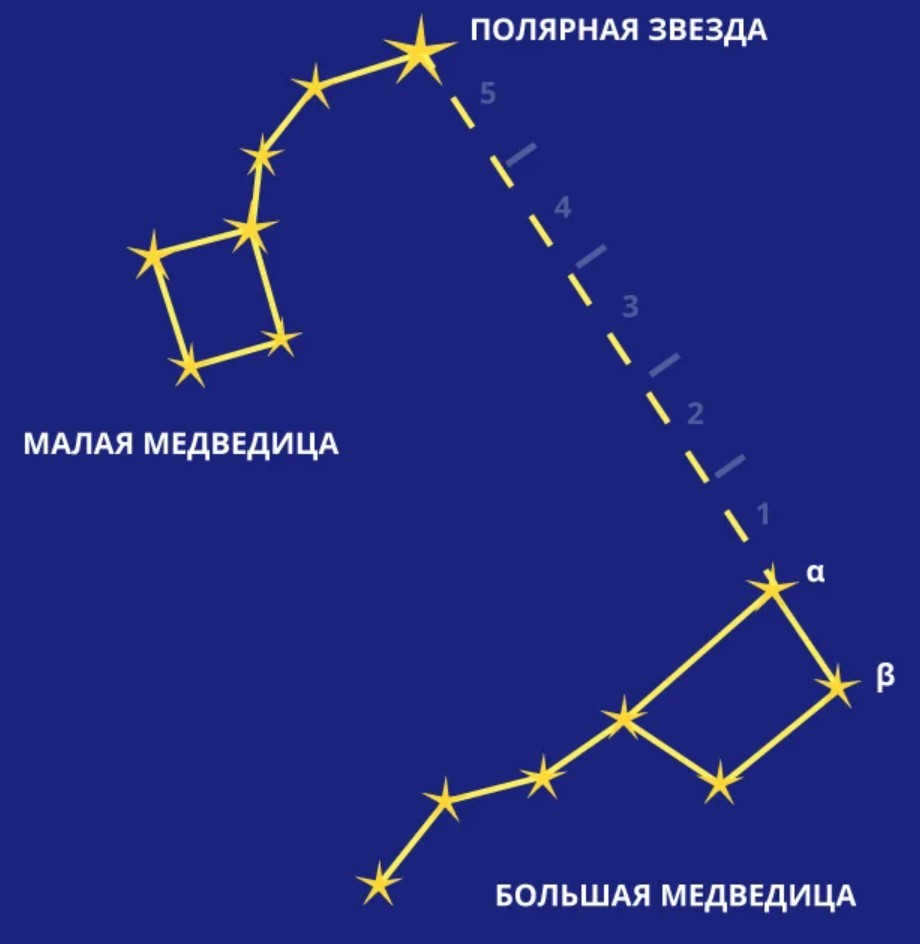
Locations of the Ursa Minor and Ursa Major
These constellations can be observed throughout the year without any restrictions. Currently, the star of Ursa Minor aligns with the North Pole of the Earth. There are also other notable star patterns within these constellations, including the Guardians of the Pole and the Little Dipper.
According to mythology, Ursa Minor is said to represent a dog that belonged to Callisto. Both Callisto and her loyal dog were transformed into stars by Zeus and placed in the sky, where they would live forever.
This is a brief overview of some of the most well-known constellations and their ancient origins that have been passed down through the ages.
Star formations
Constellations are artistic representations of the arrangement of stars in the night sky, created by the creative minds of poets, farmers, and astronomers. These imaginative individuals have been inventing these celestial shapes for over 6,000 years, using familiar patterns that we can easily recognize. The primary purpose of constellations is to assist in locating specific stars and identifying their unique characteristics. On a perfectly dark night, one may be able to observe anywhere from 1000 to 1500 stars. However, deciphering what you are actually looking at can be a challenge. This is where the brightest constellations come into play, dividing the vast heavens into distinguishable sectors. For instance, if you come across three prominent stars grouped together, you will instantly recognize that you are gazing at a portion of Orion. From there, it becomes a matter of memory to remember that Betelgeuse is situated in the left shoulder and Rigel resides in the leg. Nearby, you will also notice the Hound Dog and its accompanying stars. To assist in your stargazing adventures, refer to the charts and maps of the constellations, which provide information on the names, brightest stars, and precise locations in the sky. Additionally, each constellation is accompanied by captivating photos, illustrations, and intriguing facts. Lastly, do not forget to explore the zodiacal constellations that grace the starry expanse above.
The latest maps of the starry sky, charts of constellations, and online options for viewing them are valuable resources for anyone intrigued by the vastness of the cosmos. Additionally, it’s worth exploring programs and services that offer the opportunity to navigate the universe on a grand scale.
Asterisms
When observing constellations in the sky from the northern hemisphere, asterisms – specific patterns within the constellations – are often used. Some of these asterisms have alternative names to make them easier to remember and identify. For example, there is the Big Bucket (part of the Big Dipper) and the Little Bucket (part of the Little Dipper). The following are descriptions of the most popular asterisms.
All constellations worldwide are categorized by months, meaning their highest visibility in the sky is entirely dependent on the season. Hence, for classification purposes, they are divided into four groups based on the four seasons (winter, spring, summer, and fall). The key point to remember is that if you are following the calendar to track constellations, you should start at 21:00. If observing earlier, you need to subtract half a month, and if you begin after 21:00, you should add half a month.
For the sake of easy navigation, we have organized all the names of constellations in alphabetical order. This feature proves to be highly beneficial if you are focused on a specific collection of stars. It is important to note that the diagrams solely display the most prominent stars. To delve deeper into the subject, it is necessary to access a star map or a planisphere – a mobile version. To gain additional fascinating knowledge about constellations, take advantage of our informative articles:
Images of star formations
Immerse yourself in the mesmerizing expanse of the universe with our exclusive compilation of extraordinary pictures capturing renowned constellations.
Star formations in winter, spring, summer, and fall skies
Alphabetical listing of celestial constellations
The establishment of distinct boundaries for the constellations did not occur until the beginning of the 20th century. In total, there are 88 constellations, with 48 of them being derived from the Greek constellations described by Ptolemy in the 2nd century. The definitive delineation of the constellations took place in 1922, thanks to the efforts of American astronomer Henry Norris Russell. The actual boundaries were officially established in 1930 by Belgian astronomer Eugene Delport, who used vertical and horizontal lines as markers.
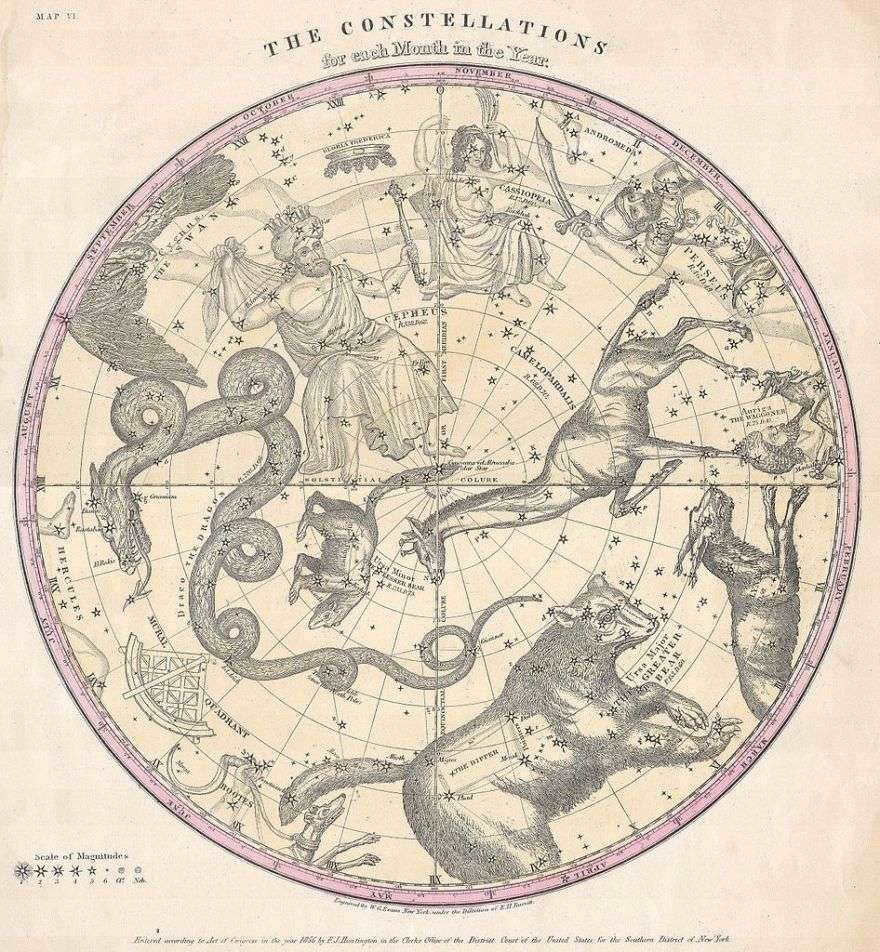
This is a unique and exclusive map of the northern hemisphere created by W. J. Evans in 1856. The map showcases a variety of constellations, each representing a different month. The level of detail in the illustrations is remarkable, with the zodiacal figures clearly depicted. Among the constellations featured are the Big Dipper, Little Dipper, Dragon, Perseus, Cassiopeia, Giraffe, and Cepheus.
It is interesting to note that many of these constellations have inherited their names from ancient civilizations such as Rome, Greece, and the Middle East. However, as human cultures and civilizations have evolved over time, so too have the constellations. Some constellations have disappeared from popular knowledge, while new ones have emerged. For example, the Wall Quadrant constellation was established in 1795 but eventually split into the Dragon and Volopas constellations.
Another example of constellation evolution is the Greek constellation Ship of Argo, which was later divided by Nicholas Louis de Lacay into the Keel, Sails, and Stern constellations. This division was officially cataloged in 1763 and reflects the ever-changing nature of our understanding of the night sky.
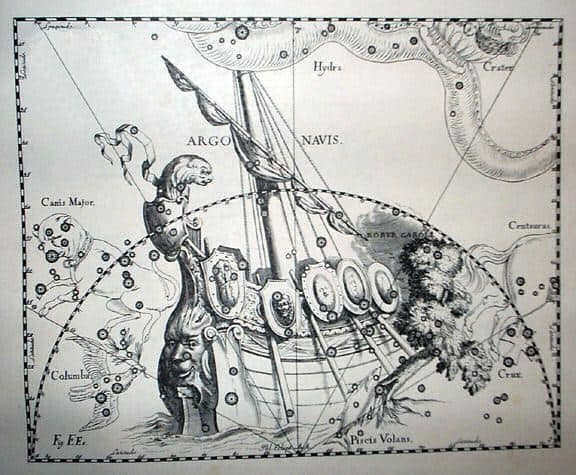
The Argo constellation is depicted in a 1690 illustration called Constellation Ship Argo.
When scientists refer to stars and objects, they are indicating that they are located within the boundaries of these constellations. However, it’s important to note that the constellations themselves are not physically real. In reality, all stars and nebulae are far away and even appear flat (although from Earth, they appear as lines).
In addition, the distance of these celestial objects also results in a time delay, as we are observing them in the past. This means that they may have changed since we last observed them. For example, Antares in the Scorpius constellation is located 550 light years away from us, which is why it appears the same to us. The same applies to the three-dimensional Sagittarius Nebula, which is located 5200 light-years away. There are even more distant objects, such as NGC 4038 in the Raven constellation, which is situated 45 million light-years away.
It is a constellation, which is a collection of stars that forms a distinct shape. Alternatively, a constellation can refer to one of the 88 officially recognized configurations. According to some dictionaries, a constellation can also be any grouping of stars that represents a celestial being and is given a specific name.
Origin
In ancient times, people would observe the stars and identify patterns resembling animals or heroes. They would then create stories about these constellations to aid in remembering their locations.
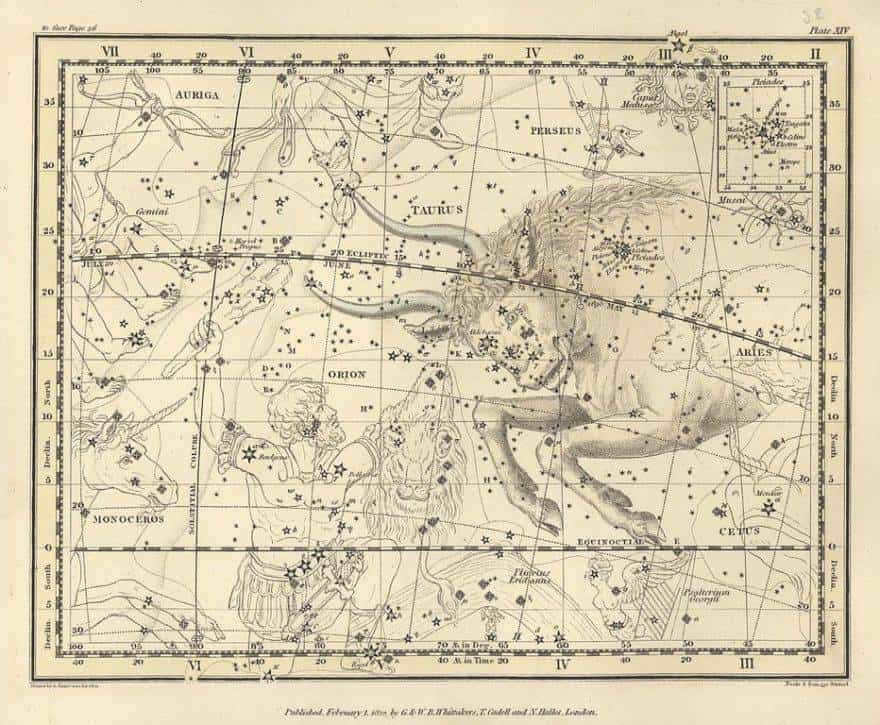
There are 13 cards on this plate, representing constellations like Orion and Taurus.
Throughout history, Orion and Taurus have held significant cultural importance and have been the subjects of various myths and legends. When astronomers started creating their first maps, they drew inspiration from these existing stories.
The term “constellation” has its roots in the Latin word constellātiō, which means “a multitude with stars.” According to the Roman soldier and historian Ammianus Marcellinus, it was first used in the 4th century. The word made its way into English in the 14th century, initially referring to planetary unions. It wasn’t until the mid-16th century that it took on its modern meaning.
The catalog is based on the 48 Greek constellations proposed by Ptolemy. However, he only documented the discoveries made by the Greek astronomer Eudoxus Cnidus (who introduced astronomy to Babylon in the 4th century BC). Thirty of these constellations have ancient origins, with some of them even dating back to the Bronze Age.
The Greeks adopted Babylonian astronomy, resulting in overlapping and duplications of constellations. Many constellations could not be identified by the Greeks, Babylonians, Arabs, or Chinese because they were not visible in their respective regions. The southern constellations were first recorded in the late 16th century by Dutch navigators Federico de Houtman and Pieter Dirkszoon Keyser. Subsequently, they were included in Johann Bayer’s star atlas, Uranometria (1603).
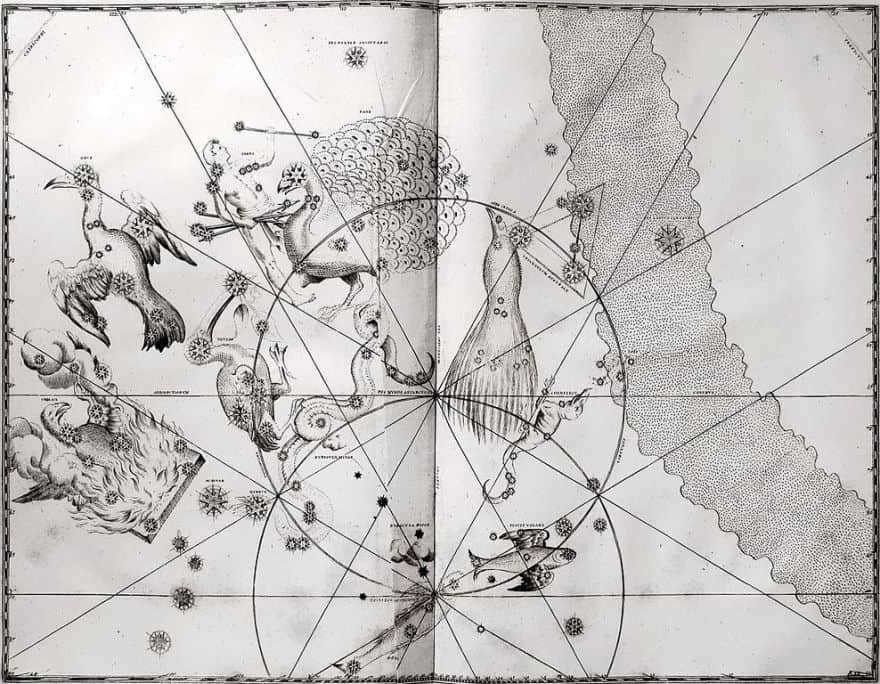
An illustration from Johann Bayer’s Uranometria depicts the newly discovered constellations in the southern hemisphere.
Bayer introduced 11 new constellations, such as Toucan, Fly, Goldfish, Indian, and Phoenix. Additionally, he assigned Greek letters to 1,564 stars, ranking them by brightness (starting with Alpha). These designations have endured and now coexist with the approximately 10,000 stars visible to the naked eye. Some stars even have full names due to their exceptional luminosity, like Aldebaran, Betelgeuse, and others.
Nicholas Louis de Lacaille, a French astronomer, contributed several constellations to the southern sky. His catalog was published in 1756 and included 13 new constellations. Noteworthy examples from his collection are Octanthus, Painter, Furnace, Table Mountain, and Pump.
Out of the 88 constellations, 36 can be found in the sky of the northern hemisphere, while the remaining 52 are located in the southern hemisphere.
A Note from the Writer
Constellations serve as a valuable tool for exploring the vast expanse of stars that adorn the night sky. By familiarizing yourself with these stellar patterns, you can uncover the awe-inspiring wonders of the cosmos.
If you’re just starting out in amateur astronomy, it’s crucial to overcome the initial hurdle of understanding constellations. Without this foundational knowledge, you may find yourself at a standstill, unable to locate important celestial objects such as the Andromeda galaxy. While it may seem daunting at first, deciphering the intricate tapestry of the night sky is entirely achievable.
At present, constellations are designated as divisions within the celestial sphere, serving as navigational aids in the vast expanse of the starry sky.
During ancient times, individuals also exhibited a keen interest in the field of astronomy. However, it must be acknowledged that these early studies did not fully qualify as scientific endeavors.
With a penchant for creativity, individuals conjured up names for imaginative patterns formed by stars, christening them as constellations. This system, however, was far from flawless, with certain stars occupying multiple constellations or simply lacking significance altogether.
In 1922, the International Astronomical Union made the decision to partition the sky into distinct regions, officially recognizing 88 constellations. Within the confines of Russia, only 54 constellations are visible. Here, we have compiled a list of the top 10 renowned constellations adorning the night sky.
Dragon
The mythical creature known as the dragon is a popular subject in various cultures and folklore. With its reptilian appearance, large wings, and ability to breathe fire, the dragon has captivated the imaginations of people for centuries. Whether portrayed as a fearsome and destructive monster or a wise and powerful guardian, the dragon has become a symbol of strength, wisdom, and magic. From ancient legends and fairy tales to modern literature and films, dragons continue to fascinate and inspire.
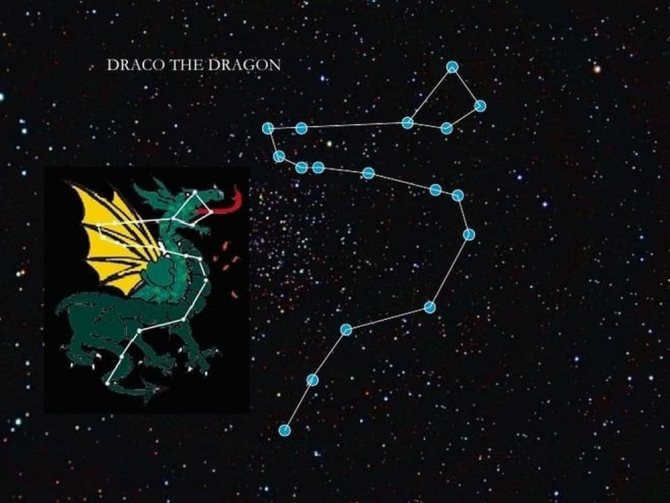
The constellation known as The Dragon is one of the largest in the night sky, covering an area of 1,083 square degrees. It can be quite challenging to distinguish this constellation due to its dim and faint stars. In fact, there are over 80 stars in this constellation with a magnitude of brightness measurement exceeding 6m.
If you observe the sky around the Big Dipper, you will notice a long curved line that forms the head of the dragon, ending in a quadrangle shape. The Dragon is located in the Northern Hemisphere, between the Little and Big Dipper.
For the best viewing experience, it is recommended to observe this constellation during the summer and fall months, specifically from May through December.
The origin of the constellation is surrounded by myths and enigmas. One version suggests that a colossal creature dared to challenge the Olympian gods. This act enraged Athena, who cast the serpent into the heavens, thus giving birth to the Dragon constellation.
The most luminous star in the celestial sphere
Among the brightest stars is Sirius in the Canis Major. In our northern latitudes, it is only visible during the winter season. As one of the closest celestial bodies to the sun, its light takes a journey of approximately 8.6 years to reach us.
The Sumerians and ancient Egyptians bestowed divine status upon Sirius. Egyptian priests, 3,000 years ago, utilized the rising of Sirius as a means to accurately predict the onset of the Nile flood.
Sirius B is perhaps the most massive white dwarf that astronomers are aware of. Typical dwarfs of this category are only half as heavy.
Arcturus in Volopassus is the most brilliant star in the northern latitudes and it is one of the most peculiar celestial bodies. It is 7.3 billion years old, nearly half the age of the universe. With a mass approximately equal to that of the sun, it is 25 times larger, as it is composed of the lightest elements – hydrogen, helium. Evidently, during the formation of Arcturus, metals and other heavy elements were not plentiful in the universe.
Similar to a king in exile, Arcturus traverses through space surrounded by a retinue of 52 smaller stars. It is possible that they are all part of a galaxy that was engulfed by our Milky Way a very, very long time ago.
Arcturus is located at a distance of approximately 37 light years from Earth – a relatively close proximity on the grand cosmic scale. Belonging to the category of red giants, Arcturus emits a luminosity that is 110 times greater than that of our own Sun. The accompanying image provides a visual representation of the relative sizes of Arcturus and the Sun.
Constellation Cepheus
The constellation Cepheus can be found in the Northern Hemisphere. It covers an area of 588 square degrees and contains 148 stars that are visible to the naked eye.
Its closest neighboring constellation is Ursa Minor, which is easily recognizable even by those who have no knowledge of astronomy.
Cepheus has an irregular pentagon shape and does not have any bright stars. However, it can be observed throughout the year in the territory of Russia.
Cepheus is notable for being the future location of the North Pole. However, this shift will occur in 1000 years.
According to Greek mythology, the constellation has its roots in the story of the Ethiopian ruler Cepheus. However, there is a lack of consensus among scientists regarding this claim, as there is evidence suggesting that the constellation actually emerged at a much later time.
The Homunculus Nebula
The Homunculus Nebula, which surrounds the exploded star Eta Carinae, has a distinctive shape consisting of two lobes. It first became visible to astronomers in the early 19th century. With a polar diameter of 0.7 light-years, this nebula is relatively small. Recent research suggests that there is a tiny bipolar nebula located at its center, known as the Little Homunculus.
This bipolar nebula is located in the constellation Carina. Credit: thestarsandplanets.com
Due to its gas-dynamic instability, the Homunculus Nebula undergoes constant changes in its appearance. Spanning over 50 light-years, this diffuse cluster of gases is one of the largest nebulae in the Milky Way galaxy.
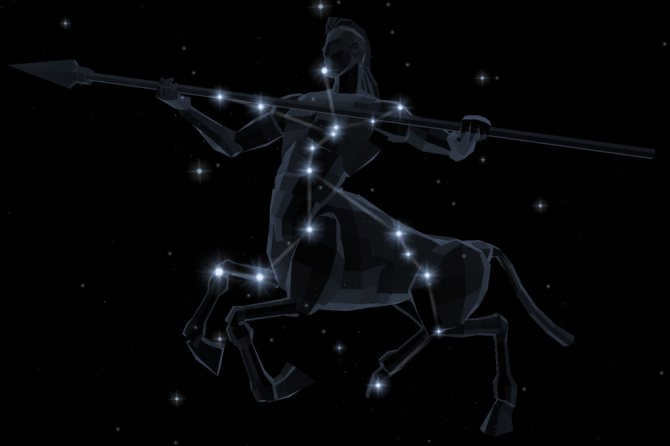
Centauri is a constellation that covers an impressive area of 1,060 square degrees. Unfortunately, residents of the Northern Hemisphere are unable to witness its stunning beauty.
Located in the Southern Hemisphere, Centauri can be found along a line from the Big Dipper to the constellation Virgo.
In Russia, the visibility of Centauri improves as you move further south. However, it is impossible to see the constellation in its entirety within the country’s borders. Resembling a centaur, Centauri is composed of a collection of bright stars.
According to Greek mythology, the wise centaur Chiron is believed to be the son of the supreme deity Kronos and the beautiful nymph Philira.
Another centaur prototype is Pholus, who was sent to the heavens by Heracles. He was struck by a poisoned arrow from Heracles’ bow.
Idol worship
In the past, each constellation in the south and each group of stars in the north held a symbolic meaning. Every star has the ability to emit light, with the most brilliant being Sirius, which belongs to the category of the Big Dog. This celestial body is ancient, having existed for 25 million years. It is also considered massive, with a mass index twice that of the Sun. Throughout the centuries, Sirius has been revered as an idol by many, worshipped and even offered sacrifices in exchange for assistance in resolving various matters. Some celestial objects are even mentioned in religious texts.
Visible in the night sky are Sirius (the brightest star), Procyon (located above and to the left), and the constellation Orion (on the right). The area between Sirius and Procyon offers a clear view of a section of the Milky Way.
Virgo
The Virgo is the sixth astrological sign in the zodiac. It is represented by the symbol of the maiden. People born between August 23 and September 22 are considered to be Virgos.
Virgos are known for their practicality, attention to detail, and analytical nature. They are often perfectionists and strive for excellence in everything they do. Virgos are also known for their strong sense of responsibility and their ability to work hard and stay focused.
In relationships, Virgos are loyal and dedicated partners. They are reliable and will always be there for their loved ones. However, they can sometimes be critical and nit-picky, which can lead to tension in relationships. Virgos also have a tendency to overanalyze things, which can cause them to worry and stress.
In terms of career, Virgos excel in jobs that require precision and attention to detail. They make excellent researchers, analysts, and organizers. Virgos are also known for their practicality and can often see the most efficient way to solve a problem.
Overall, Virgos are hardworking, practical, and thoughtful individuals. They may be perfectionists, but their attention to detail and analytical nature make them valuable assets in many areas of life.
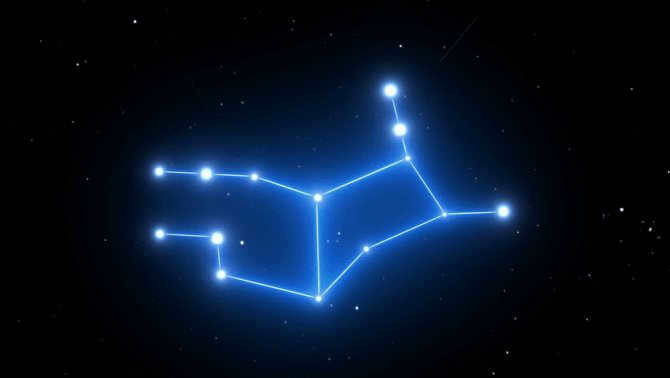
The constellation Virgo is the second largest, covering an area of 1,294 square degrees. It is positioned along the equator, situated between the constellations Leo and Libra.
Virgo is notable for being the location of the autumnal equinox.
In older atlases, Virgo is represented as a maiden holding an ear of wheat. However, it is highly unlikely that an average person would be able to discern such a depiction in the night sky.
There is a significant marker that aids in locating this constellation – the first magnitude star Spica. In total, there are 171 stars visible to the naked eye.
Ancient Greek legends tell the story of how the constellation Libra came to be, and it is quite unique. According to the myth, the goddess of justice, Dika, was so fed up with the actions of humans that she decided to abandon Earth and take up residence in the night sky. She found her place next to the symbol of justice, which we now know as the constellation Libra.
Hydra
Hydra is the longest constellation, covering an impressive 1300 square degrees of the sky. It can be found in the Southern Hemisphere.
In Russia, the best time to observe Hydra is during late winter or spring. Those living in southern cities will have the best view of the constellation.
A total of 229 stars can be seen without the need for a telescope or binoculars, although they may not be particularly bright.
Within the constellation, there are several interesting stars to observe, including Alpha Hydra, Gamma Hydra, Xi Hydra, and various scattered clusters.
Another interpretation suggests that Hydra is actually the nemesis of Heracles, a fearsome creature with seven heads.
Cassiopeia
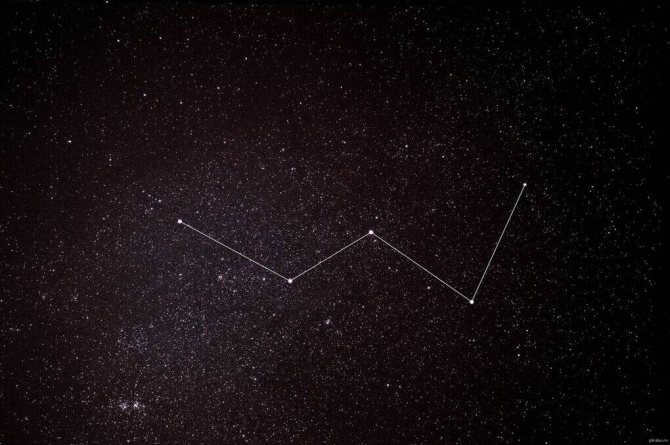
Cassiopeia can be observed all year round in the Northern Hemisphere, particularly in the middle latitudes. The best time to observe it is during the fall season.
This constellation has a distinct shape resembling the letter W and covers an area of 598 square degrees. With a total of 90 visible stars, its silhouette is formed by the 5 brightest ones.
The constellation was named after the wife of King Cepheus. Cassiopeia, who was also the mother of Andromeda, was a prideful woman who was eventually punished. She was tied to a throne and continuously spun around a pole, causing her to be upside down with her head hanging down once a day.
Star Names Based on Color
The color of a star is determined by its temperature, which in turn is influenced by its mass and age. The youngest and most massive stars are the blue giants, with surface temperatures reaching 60,000 Kelvin and masses up to 60 times that of the Sun. A prominent example of a blue giant is Spica, the alpha star in the Virgo constellation.
On the other end of the spectrum, the coldest stars are the small, old red dwarfs. These stars have an average surface temperature of 2-3 thousand Kelvin, and their mass is about one-third that of the Sun. The diagram clearly illustrates the relationship between size and color.
Based on their temperature and color, stars are classified into 7 spectral classes, which are denoted by Latin letters in astronomical descriptions.
The Winged Horse – Pegasus
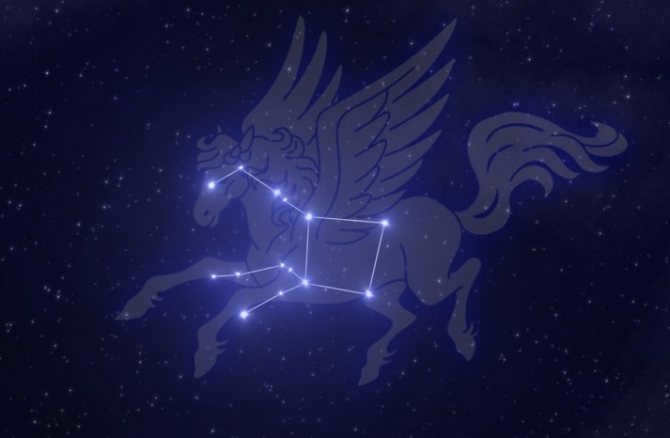
Pegasus is a constellation of significant size. It can be found in the Northern Hemisphere and covers an area of 1120.8 square degrees. Even without using any instruments, it is possible to spot 166 stars. The optimal period for observation is late summer or early fall.
Pegasus is characterized by a large square shape dotted with stars that resemble tentacles. It takes a vivid imagination to envision the winged horse in this constellation.
In ancient Greek mythology, Pegasus is a mythical creature known as a winged horse. According to the stories, Pegasus was created when Perseus beheaded the Medusa Gorgon, and her blood transformed into this magnificent creature.
The location where Hercules is found is in the Northern Hemisphere. This constellation covers an area of 1,225 square degrees and is widely recognized.
The shape of the constellation resembles a trapezoid, representing the titan’s torso, and is the most prominent feature. In Russia, observers can see the entire constellation, although a small portion may be hidden below the horizon during the lower culmination. The best time to view Hercules is in June.
Originally, this constellation was called “Kneeling.” The ancient poet Aratus described it as a suffering husband, although the reasons for his suffering were unknown.
In the 5th century BC, the constellation was given a new name and became known as Hercules. Later on, it was also referred to as Hercules.
If we consider Kiel separately, it does not possess its own historical significance. However, it was once a part of the vast constellation known as the Ship Argo, a name that is likely familiar to many. It was aboard this legendary vessel that Jason and the Argonauts embarked on their famous quest to Colchis (now western Georgia) in search of the Golden Fleece.
The Ship Argo is recognized as one of the 48 constellations identified by the ancient Greeks and was documented by Ptolemy in the second century. It occupies a significant portion of the night sky, positioned between the prominent Canis Major and the iconic Southern Cross. Later on, the constellation Compass was also included in this celestial grouping.
The keel serves as the primary component of the Argo Vessel, with the paddle on one of the oars being indicated by the star Canopus. The ship derives its name from its creator, Argos, who was tasked by Athena to construct it using trees from Mount Pelion. Additionally, the goddess acquired oak beams from Greece’s most renowned and ancient oracle, which was dedicated to Zeus.
Illustration displaying the constellation known as The Ship of Argo
Once the ship was completed, Jason and a group of 50 esteemed Greek heroes, known as the Argonauts, embarked on a journey to Colchis. Among their ranks were Heracles, Orpheus, Castor, and Polydeuces. Along the way, they encountered the Clashing Rocks, which guarded the entrance to the Black Sea and had a tendency to shift and crush passing ships. It is widely believed that Argo’s vessel was the first to successfully navigate through this perilous obstacle.
After obtaining the Golden Fleece from the king in Colchis, Jason made his way back to Greece. The ship that had served him on his journey was then sent to Corinth and dedicated to Poseidon.
According to Isaac Newton, this significant event was believed to be marked in the 12 signs of the zodiac, although no concrete connection has been found. Another myth suggests that the star Canopus was named after King Menelaus, who served as the helmsman. Unfortunately, Menelaus met his demise in Egypt due to snake venom while the fleet was returning from Troy. Menelaus received a burial with full honors, and the location of his grave eventually became a city, known today as Abu Kir.
The Great Bear
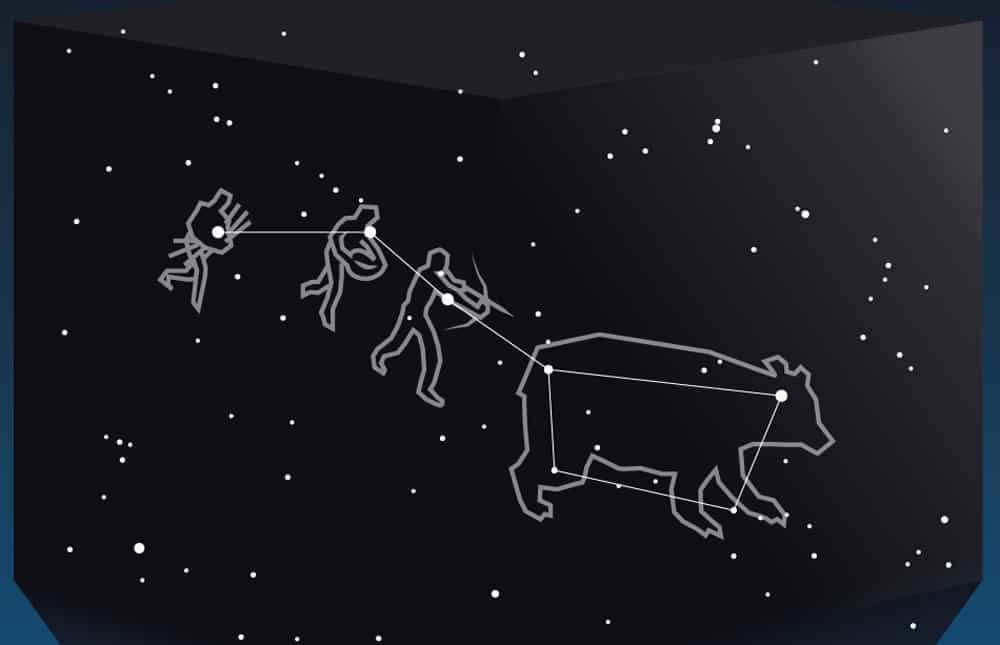
Andromeda is a constellation that is well known in the northern hemisphere. Many people have seen the distinct shape of the bucket with a handle in the night sky. The Andromeda constellation covers an area of 1280 square degrees, making it the third largest constellation. It contains 125 stars that can be seen without the need for a telescope.
The Big Dipper, which is a recognizable group of stars, is just one of the many asterisms in the Andromeda constellation. There are several other asterisms within this constellation as well.
The origin of the Andromeda constellation can be traced back to ancient Greek mythology. According to the legends, Zeus transformed the beautiful nymph Callisto into a bear to protect her from the goddess Hera’s anger.
The language of modern astronomy is devoid of any poetic and romantic elements; you won’t come across any stars referred to by names in the atlases. However, in ancient times, the brightest and most significant celestial bodies were given names. Many of these names have Arabic origins, but some trace back to the ancient Akkadians and Sumerians.
Polaris, also known as the North Star, holds a special place in the night sky. Situated at the end of the handle of the Little Bear’s bucket, it has served as a guiding light for seafarers throughout antiquity. Polaris remains almost stationary and consistently points towards the north. Each nation in the northern hemisphere has its own name for this celestial entity. The ancient Finns referred to it as the “Iron Stake,” the Khakasses called it the “Tethered Horse,” and the Evenks named it the “Hole in the Sky.” The ancient Greeks, renowned for their travels and seafaring, called it “Kinosura,” which translates to “dog tail.”
Sirius. The star’s name is said to have originated from ancient Egypt, where it was linked to a manifestation of the goddess Isis. In ancient Rome, it was known as Canicula, which is the root of our word “vacation.” This is because Sirius would appear in Rome at dawn during the summer days of extreme heat, causing the city’s activities to come to a halt.
Aldebaran. It always follows the Pleiades cluster in its movement. In Arabic, its name means “follower.” The Greeks and Romans referred to Aldebaran as the “Eye of the Calf.”
The Pioneer-10 probe, which was launched in 1972, is currently headed towards Aldebaran. It is estimated that it will take approximately 2 million years to reach its destination.
Vega. Arab astronomers referred to it as “The Falling Eagle” (An nahr al waghi) from the corrupted “waghi”, meaning “falling”, the name Vega was derived. In ancient Rome, the day when it rose above the horizon before sunrise was considered the final day of summer.
Vega was the first star (apart from the Sun) to be captured in a photograph. This occurred nearly two centuries ago in 1850 at the Oxford Observatory.
Betelgeuse. Its Arabic name is Yad Al Juza (the hand of the twin). During the Middle Ages, due to translation confusion, the term was misread as “Belle Jusa”, thus giving rise to the name Betelgeuse.
This star is beloved by science fiction writers. One of the characters in the novel “Hitchhiker’s Guide to the Galaxy” hails from a small planet in the Betelgeuse system.
Fomalgaut. Alpha South Pisces. This star is known as “Fish Mouth” in Arabic. It is the 18th brightest star visible at night. Archaeological evidence suggests that Fomalgaut has been revered for at least 2,500 years, dating back to the prehistoric era.
Canopus. Unlike many other stars, Canopus does not have an Arabic origin for its name. According to Greek mythology, the name Canopus refers to the sternman of King Menelaus.
In Frank Herbert’s famous book series, the planet Arrakis orbits around Canopus.
Taurus, another stunning constellation in the northern hemisphere, is located northwest of Orion and lies between the constellations Aries and Gemini. Nearby Taurus, you can find other constellations such as Ascendant, Whale, Perseus, and Eridanus.
This group of stars can be observed in the middle latitudes for most of the year, except for the latter part of spring and the beginning of summer.
The origins of this constellation can be traced back to ancient mythology, which tells the story of Zeus transforming into a bull to abduct the goddess Europa and bring her to the island of Crete. The mathematician Eudoxus, who lived in ancient times, was the first to describe this constellation.
The brightest star in not only this constellation, but also in the other 12 star groups, is Aldebaran. It is located on the head of Taurus and was once referred to as “the eye”. Aldebaran is 38 times larger than the Sun and 150 times brighter. This star is located 62 light years away from us.
The second brightest star in the constellation is known as Nat or El-Nat (the bull’s horns). It is situated in close proximity to the Ascendant. This star shines 700 times brighter than the Sun and is 4.5 times larger in size.
Within this constellation, there are two extraordinarily stunning scattered star clusters, the Hyades and the Pleiades.
The Hyades cluster is approximately 650 million years old. It can be easily spotted in the night sky due to the presence of Aldebaran, which is clearly visible among its stars. The Hyades cluster consists of around 200 stars.
The Pleiades cluster derived its name from being divided into nine parts. Seven of these parts are named after the seven sisters of ancient Greece (the Pleiades), while the other two are named after their parents. The Pleiades cluster is highly visible during the winter season and contains approximately 1000 stellar bodies.
We observe various constellations depending on the time of year
Throughout the course of the year, our perspective of the night sky changes as the Earth orbits around the Sun. This means that different parts of the sky, and consequently different celestial bodies, come into view at different times. The constellations we see during the nighttime are the ones that are positioned behind the Earth on our side of the Sun. During the daytime, however, these constellations are hidden from our view by the Sun’s bright rays.
To gain a deeper comprehension of the process, envision yourself on a merry-go-round (representing the Earth) with an intensely radiant, dazzling source of light (symbolizing the Sun) emanating from the center. Due to the brilliance of the light, your line of sight is hindered, allowing you to only perceive the surroundings beyond the carousel. As you continuously spin in a circular motion, the scenery will consistently transform. The specific constellations you witness in the celestial sphere and the timing of their appearance are contingent upon the geographic latitude of the observer.
Astrological Constellations
The zodiac is a notional line encircling the Earth where a cluster of constellations are situated.
As the Earth orbits the Sun, we can observe the imaginary line along which the Sun appears to move across the sky throughout the year. This line is known as the ecliptic.
The astrological constellations are those found along the zodiac and intersected by the Sun’s ecliptic.
They are also referred to as the zodiac signs. In total, there are 12:
- Aries,
- Taurus,
- Gemini,
- Cancer,
- Leo,
- Virgo,
- Libra,
- Scorpio,
- Sagittarius,
- Capricorn,
- Aquarius,
- Pisces.
Astrology ascribes great significance to these signs. This ancient doctrine still exists today and is concerned with the impact of the cosmos, stars, and celestial bodies on human beings – their personality, destiny, thoughts, and more.
The names of the stars in the Ursa Minor constellation
This constellation is composed of multiple segments. While they may be less bright than their counterparts in the Ursa Major constellation, they are still easily visible in a clear night sky.

There are four constellations in the night sky that have their own names, while the others are named using letters from the Greek alphabet:
- Alpha, also known as Polaris, is the first constellation and is the brightest star in the night sky.
- Beta, also known as Cohab, is the second brightest star in the cluster. It is an orange giant and has a satellite.
- Gamma is called Ferkad. The constellations Beta and Gamma mean “two calves” in Arabic.
- Delta, Epsilon, Zita, and Ita do not have specific names.
All of these constellations are located more than 400 light-years away from Earth.
Ancient civilizations devised a method to navigate the vast expanse of the night sky by identifying groups of stars that could be connected to form distinct shapes resembling objects, mythological figures, and animals. This ingenious system allowed them to organize and easily recognize different sections of the celestial sphere.
By categorizing the stars in this way, people were able to study celestial bodies more effectively, utilize astronomical knowledge for agricultural purposes, measure time, and navigate using the stars as guides. Although stars may appear to be closely grouped together in our sky, they can actually be located at vast distances from each other. It’s also worth noting that constellations can contain unrelated stars, some of which are relatively close to Earth while others are situated far away.
What do constellations represent?
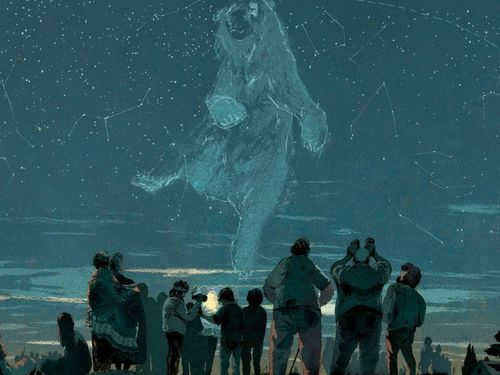
When you gaze up at the heavens on a clear night, you will be greeted by a myriad of twinkling lights that adorn the sky like a sprinkling of precious gems. These luminous beacons are known as stars. Some of these stars appear to be gathered together in clusters and upon closer inspection, they can be classified into specific groups. These groups are known as “constellations” to human beings. Some constellations may resemble the shape of a dipper or the intricate outlines of animals, although to a large extent, these resemblances are simply products of our imagination.
For centuries, astronomers have endeavored to study these clusters of stars and have attributed them with mystical properties. People have attempted to organize and identify common patterns among them, resulting in the creation of constellations. Over time, these constellations have been extensively studied, with some being subdivided into smaller constellations or refined. One such example is the constellation Argo, which was divided into Compass, Kiel, Sail, and Corma.
The history behind the names of constellations is also fascinating. In order to aid memorization, constellations were given names that shared a common element or were inspired by literary works. For instance, certain constellations were observed to rise during periods of heavy rainfall, leading to the names Capricorn, Whale, Aquarius, and the constellation of Pisces.
Winter Sky Constellations
RIGEL and BETELGEUSE are the two stars in the top league of ORION. RIGEL can be found in the lower right corner, resembling a bow on a shoe, while BETELGEUSE shines brightly on the left epaulette. ORION’s sash serves as a clue and acts as a celestial pointer. If you follow it to the left, you will discover the wonder of Sirius. And if you trace it from the right end, it will lead you straight to the red eye of ALDEBARAN in the Taurus constellation.
The Hare constellation is situated right at ORION’s feet! ORION himself poses no threat as he is aiming towards Taurus. The sash of ORION consists of three slightly skewed stars.
If you venture to the left, you will encounter the miraculous SIRIUS!
To protect this invaluable diamond from potential thieves, a massive Hound stands guard!
The tinier canine, positioned slightly above, stands watch in the sky and, forsaking tranquility and rest, protects the PROTION. Orion’s belt – Three stars askew, And from the far end – It directs the path to the Taurus constellation – Straight towards the crimson eye of ALDEBARAN.
The bull is amply nourished and virile, its right horn is adorned with NAT, and it bears two hundred minute GIADS in its nostril.
Hovering over the back of this carcass are seven crystal flies. We are delighted to introduce you to the PLEIADS cluster. Walking side by side in a circle are two loyal friends. Their figures are remarkably similar! They are the Dioscurus Brothers. One is CASTOR and the other is POLLUX! Can you hear the sound of their hooves in the heights? Boldly walking is the goat, named CAPELLA. Following closely behind are the little goats. Take a close look and count: one, two, three! And their master, WHOOSH, is clever and full of energy because he drinks hot milk all year round. The Lion sent a message to the two brave Lions: “We pay homage to the King of the Beasts! We eagerly await your visit in January!” The messenger hurriedly departed, but in reverse. To deliver the letter on time, he crawled eastward, but unfortunately, he couldn’t make it in time because the messenger was RAK!
Presentation about “The Pisces Constellation”.
Rate the presentation on a scale of 1 to 5 points.
Astronomy presentation for students on the topic “The Pisces Constellation”. pptCloud.ru – a convenient catalog that allows you to download powerpoint presentations for free.
- Format (powerpoint)
- Number of slides: 8
- Target audience
- Keywords: astronomy, cosmology, stars, constellations, zodiacal constellations, Pisces constellation
- Synopsis: Not included
Slide 1Zavolskaya Evgeniya 11 “A” State Educational Institution “Secondary School № 9 of Svetlogorsk”. Svetlogorsk”
Slide 2Pisces (Latin: Pisces) is a large constellation in the zodiac, situated between Aquarius and Aries. It covers an area of 889 square degrees, making it the 14th largest constellation. It is commonly divided into the “northern fish” (below Andromeda) and the “western fish” (between Pegasus and Aquarius). The best time to observe Pisces is from early October to late January. The constellation was introduced by the Greek astronomer Ptolemy in the 2nd century. Pisces contains the point of the vernal equinox, where the Sun crosses the equator and moves towards the northern hemisphere each year. The vernal equinox used to be located in the constellation of Aries. The Sun is in Pisces from March 12 to April 18. The optimal conditions for observation are in September through October, visible throughout Russia.
Slide 3The constellation of Pisces does not have any stars brighter than the fourth apparent magnitude. The brightest star in the constellation is Eta (η) Pisces, also known as Alpherg or KullatNunu. It is a bright giant star located approximately 294 light years away from Earth. The star is 316 times more luminous than the Sun. The constellation Pisces also contains a notable Messier object. Messier 74 is a spiral galaxy that can be observed by lifting its face. Two supernovae have been observed in it in the past decade. The galaxy can be spotted between the alpha of Aries and Pisces.
Slide 4Alpha (α) of the constellation Pisces, or Alrisha (“rope”), marks the point where the tails of the fish are tied together. It is the third brightest star in Pisces. It consists of a close pair of white dwarfs. Gamma (γ) of the constellation Pisces, the second brightest star, is a yellow giant located approximately 130 light years away from Earth. Beta (β) of the constellation Pisces has an apparent magnitude of 4.53 and is about 492 light-years away from Earth. It is also known as Fum al Samakah, which means “mouth of the fish” in Arabic.
Slide 5Map of the starry sky
Slide 6The constellation of Pisces was often mentioned in ancient Greek mythological stories that captivate with their poetic nature. Every morning, the Nereids – fifty daughters of the sea god Nereus – emerged from the depths of the sea. They danced joyfully and entertained themselves on the seashore. One of the Nereids, the beautiful Galatea, once lagged behind her sisters. At that moment, Akid, the son of Semetida, a tall, slender, and handsome young man resembling the god Apollo, passed by. Galatea saw him and gazed at him with her deep blue eyes. Similarly, Akid, enchanted by her divine beauty, forgot where he was going and why, and approached her… The two young people fell in love with each other and became inseparable from that day forward.
Slide 7However, Akid was not the only one who loved the beautiful Galatea. One day, the Cyclops Polyphemus noticed her on the seashore and became consumed by an intense love for her. Galatea was afraid of the fearsome Polyphemus and always avoided him. Polyphemus’ love for Galatea grew stronger and stronger. One day, he saw them together and, driven mad by his love for Galatea, he rushed towards them. The earth trembled under the stomping of his feet, and the sea became turbulent… Galatea and Akid were frightened and threw themselves into the stormy sea. There, they transformed into fish and swam into the depths of the sea, bound together by a long and wide ribbon – a symbol of their eternal love. The gods rescued the two fish from the sea and brought them to the heavens.
Tithon was captivated by her beauty and he chased after Aphrodite and Eros. In order to escape from him, they jumped into the Euphrates River and transformed into fish. The deities then placed these two fish in the sky as constellations, connected by a ribbon to symbolize the immense love of a mother. Another tragic tale involves King Priam’s brother, Tithon, who possessed an enchanting beauty that caught the attention of the goddess Eos. She abducted Tithon and the gods granted him immortality, but withheld eternal youth. As days and years went by, his face bore the cruel marks of time.
Questions and Answers
What is the meaning of the name of a star that is shiny and sparkling?
The star with that name is Sirius. It is exceptionally bright and can even be seen during daylight.
Which constellations can you see without using any instruments?
You can see all constellations without any instruments. Ancient people invented constellations long before telescopes were invented. Additionally, you can also see planets like Venus, Mercury, and Mars without a telescope.
Which constellation is the largest in size?
The largest constellation is Hydra. It is so extensive that it cannot be fully observed in the northern sky and extends beyond the southern horizon. Hydra covers almost a quarter of the entire horizon.
Which constellation is the smallest in size?
The smallest, yet brightest, constellation is the Southern Cross. It can be seen in the southern hemisphere.
The Sun is orbited by the Earth, and throughout the course of a year, we observe it passing through a total of 12 constellations, each one corresponding to a specific month. This collection of constellations is known as the Zodiac Belt.
The celestial objects’ journey through the constellations
As a result of the Earth’s rotation, the stars appear to move. Because the Earth spins in an eastward direction, the stars appear to rise in the east and travel across the sky to set in the west. Occasionally, the Sun also appears to move through these constellations, completing a full circle in a span of 365 days.
The Earth has a tilt of 23.5 degrees from the vertical position, which not only results in the occurrence of seasons but also has an impact on our perception of the sky. This tilt explains why we are able to observe different constellations during each season. However, there are certain constellations that are visible throughout the year, known as circumpolar constellations. These constellations revolve around Polaris and, as we reside in the Northern Hemisphere, we have the opportunity to view them year-round. The circumpolar constellations include the Big Dipper, Cassiopeia, the Little Dipper, and the Swan.
What is the total number?
In a year, the Sun completes a full revolution around a vast circular path known as the zodiac. This circular path consists of 360 degrees and is divided into 12 equal sectors, each measuring 30 degrees. Each sector is named after a constellation that the Sun passes through during its journey.
Each month is associated with a specific zodiac symbol, marking the path of the Sun during that time. In ancient times, people used the constellations of the zodiac as a calendar, with the Sun spending about a month in each of them. However, due to the ever-shifting Vernal Equinox point (which moves 1 degree every 70 years), the Sun now moves through two neighboring constellations during one month. Despite this, the traditional month designations have been preserved. The Sun spends the longest time in the constellation of Virgo – 44 days, while it passes through the constellation of Scorpio in just 6 days. It’s worth noting that between November 30 and December 18, the Sun also passes through another group of stars known as the Serpentine. However, historically, this period was not assigned its own month and is not included in the zodiac constellations.
Cassiopeia, a constellation located in the northern hemisphere, was initially charted by the astronomer Ptolemy during the 2nd century. The name of this constellation was derived from Queen Cassiopeia, who hailed from the mythical kingdom of Ethiopia.
In ancient Greek mythology, Cassiopeia made the grievous mistake of boasting that she possessed greater beauty than the Nereids, sea nymphs. As a consequence of her vanity, she was forced to sacrifice her daughter Andromeda to a sea monster known as the Whale, which had been sent by Poseidon. In addition to this punishment, she was permanently placed in the sky at the celestial pole with her head facing downwards. It is relatively simple to locate this constellation in the night sky, as the arrangement of its five bright stars forms a distinctive ‘W’ shape.
Guide to finding the Cassiopeia constellation
- Shedar (α Cas)- magnitude 2.24
- Kaf (β Cas)- magnitude 2.27
- Navi (γ Cas)- red giant, magnitude 2.47
- Rukba (δ Cas)- magnitude 2.68
- Giraffe
- Cepheus
- Lizard
- Andromeda
- Perseus
The most notable stars and celestial objects in the Cassiopeia constellation
Kaf, also known as Beta Cassiopeia, is a giant star with a yellow-white color. It has a magnitude of 2.28 and is classified as a Delta Shield variable star. Kaf is twice the size of the Sun and shines 28 times brighter than it.
Shedir, also called Alpha Cassiopeia or Shedar, is the second brightest star in the Cassiopeia constellation. It has an apparent magnitude of 2.25 and is an orange giant star. Shedir is over 500 times brighter than the Sun.
Gamma, the central star of the constellation Cassiopeia, is a variable star. It does not have a traditional Latin or Arabic name, but it is referred to as Tsih (“whip”) in Chinese. When it is at its maximum intensity (currently with an apparent stellar magnitude of 2.15), it outshines both alpha and beta Cassiopeia. The rotation of Cassiopeia’s gamma is very fast, and it is wider along the equator, leading to mass loss.
Delta, also known as Ksora or Ruchbah (“knee”), is a double star in the Cassiopeia constellation located approximately 99 light-years away. Its apparent magnitude varies between 2.68 and 2.71.
Epsilon, also called Segin, is a blue-white giant in the Cassiopeia constellation located about 442 light-years away from Earth. Its luminosity is 720 times that of the Sun.
The Cassiopeia Rho and V509 Cassiopeia are the most prominent stars that can be observed with the naked eye in the Milky Way galaxy. Eta Cassiopeia is a binary star system composed of a yellow dwarf resembling our Sun and an orange dwarf.
Cassiopeia also boasts two noteworthy objects listed in Messier’s catalogue. Both are stellar clusters. NGC 7654, also known as M52, was first identified by Charles Messier in 1774 and can be viewed using binoculars.
Messier 103, or NGC 581, was the final object added to Charles Messier’s catalogue. Situated at a distance of 8,000 light years from Earth, it is one of the most remote clusters to be included in the catalogue. It contains an estimated 40 to 50 stars, with the brightest being Struve 131, also designated as HD 9311.
In conclusion, inside the constellation Cassiopeia, there is an irregular galaxy called IC 10, which was initially found by Lewis Swift in 1887. Due to its proximity to the Milky Way and being concealed by interstellar space, studying IC 10 is quite challenging. Nevertheless, IC 10 is recognized as the sole galaxy within the Local Group that actively produces stars.
Fascinating items in the Virgo constellation
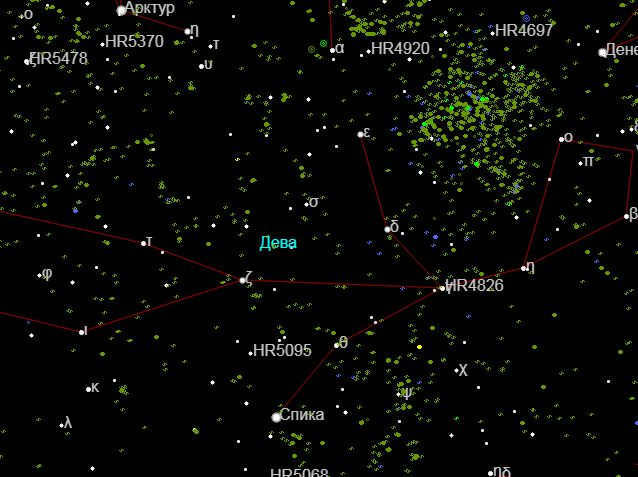
The Virgo constellation is renowned for its famous collection of galaxies, which is called the Virgo Cluster.
If you remove unnecessary captions and enable the display of faint galaxies on the “sky map online” at kosmoved.ru, the area surrounding the Virgo constellation appears as follows:
This cluster is clearly visible on the right side, near Virgo’s head. It consists of approximately one and a half thousand galaxies, with some estimates reaching as high as two thousand.
On the map, objects that can be seen with small and medium telescopes are marked in bright green and yellow.
Dark yellow indicates fainter objects that are only visible in a truly dark sky, away from cities, with a telescope that has a good aperture (at least 200mm, but preferably over 300mm).
Here is an easier-to-understand representation of the Virgo constellation, displaying only the most prominent celestial bodies visible through small telescopes:
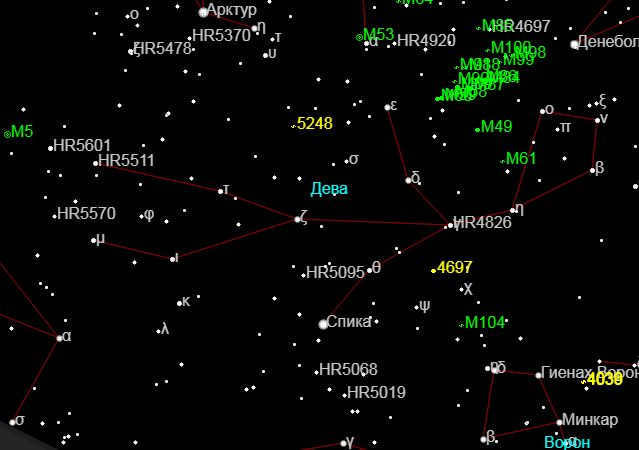
Located in the Virgo Cluster, the spiral galaxy M100 is an impressive sight in the night sky. It officially belongs to the constellation known as Veronica’s Hair. With a stellar magnitude of 9.4m, it is a popular target for telescope enthusiasts. M100 is situated approximately 50 million light years away and boasts a size similar to our own Milky Way galaxy.
In addition to M100, there are other notable galaxies within the Virgo constellation that can be observed with a small telescope. These include the elliptical galaxy M60 with a magnitude of 9.8m, as well as the visually adjacent galaxy NGC 4647. I recommend attempting to view these galaxies as well. The spiral galaxies M61 and M58, with magnitudes of 10.18m and 10.5m respectively, and the elliptical galaxy M59 with a magnitude of 10.6m, are also worth exploring.
The Virgo Cluster is not typically known for its abundance of bright galaxies, but it is still highly recommended to point your telescope towards this part of the sky and witness the wonders firsthand.
Lastly, it is worth mentioning the Markarian chain, another fascinating feature in this region.
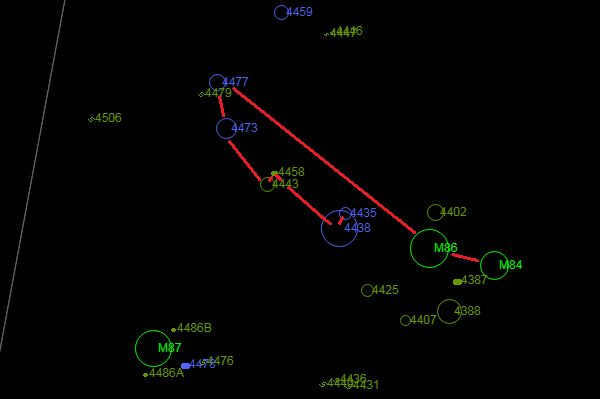
The constellation Virgo also presents the opportunity to observe the spiral galaxy M104, known as the Sombrero. This galaxy stands out due to its bright nucleus and dust rim, which give it the appearance of a Mexican sombrero. Nikolai Kurdyapin, kosmoved.ru
Nikolai Kurdyapin, kosmoved.ru
The most fascinating constellations
The most brilliant celestial body is undoubtedly the Sun. Its luminosity is determined by its size, the amount of light it emits, and its distance from us. Since the Sun is the closest star to planet Earth and provides us with the greatest amount of light and heat, it is considered the brightest luminary in our solar system. However, when considering the entire cosmos, it is not the brightest.
Among the most dazzling constellations are:
The Toucan and the Goldfish are truly exceptional and unique. Each of them contains the Megellanova cloud, which never fails to capture the attention of astronomers. In appearance, it resembles a boxer’s shell, occupying a significant portion of the sky. Scientists believe that it is a smaller version of the Milky Way.
The most brilliant celestial body in the universe
Sirius, located in the constellation Canis Major, holds the title of the brightest star in the night sky. In regions with northern latitudes like ours, it can only be seen during the winter season. This dazzling star, which is one of the closest cosmic entities to the sun, takes a mere 8.6 years for its light to reach us.
Throughout history, Sirius has been revered as a divine entity by civilizations such as the Sumerians and ancient Egyptians. In fact, Egyptian priests from 3,000 years ago had the ability to accurately predict the timing of the Nile flood by observing the rising of Sirius.
Sirius is actually a binary star system. The primary star, known as Sirius A, is approximately two times more massive than our Sun and emits light that is 25 times more luminous. Its companion, Sirius B, is a white dwarf with a mass almost equivalent to that of the Sun and shines with a brightness one-quarter that of our own star.
Among known white dwarfs, Sirius B is considered to be one of the most massive. Typically, dwarf stars of this type are only half as heavy as Sirius B.
Arcturus, located in the constellation Volopassus, stands out as the brightest star in the northern latitudes and is truly an extraordinary celestial body. With an age of 7.3 billion years, it is almost half the age of the universe itself. Despite having a mass similar to that of the Sun, Arcturus is a whopping 25 times larger due to its composition of light elements like hydrogen and helium. Interestingly, during Arcturus’ formation, heavy elements and metals were not as abundant in the universe.
Resembling a king in exile, Arcturus gracefully traverses through space with a retinue of 52 smaller stars. It is possible that these stars were once part of a galaxy that was assimilated by our own Milky Way eons ago.
Arcturus resides at a distance of approximately 37 light-years, which, in the grand scheme of the cosmos, is not excessively far. It belongs to the classification of red giants and emits a luminosity 110 times greater than that of the Sun. The image provided offers a comparison of Arcturus’ size in relation to our own Sun.
Did you know these fascinating facts about the constellation Cassiopeia?
It is quite intriguing that if you were to imagine drawing straight lines from any star in the Big Dipper through Polaris,
you would find that they almost perfectly intersect with one of the stars in the asterism Tron in the constellation Cassiopeia. This star happens to be one of the brightest in the entire constellation.
The constellation Cassiopeia was given its name in honor of the wife of King Cepheus of Ethiopia.
Cepheus and Cassiopeia were the proud parents of Andromeda, who, according to Greek mythology, was rescued from a sea monster by the hero Perseus.
Interestingly, it was Queen Cassiopeia herself who was responsible for the appearance of this monster – she had the audacity to claim that she was more beautiful than the sea nymphs known as Nereids.
The nymphs were outraged by her arrogance and sought the help of Poseidon. Being married to one of the Nereids, Poseidon obliged and sent a sea monster to Ethiopia, which Perseus had to defeat.
Due to Cassiopeia’s vanity, she is often depicted holding a mirror.
It seems that even in the world of constellations, female intrigue cannot be avoided, but without such conflicts, there would be no need for heroes…
If you examine a star chart, you will notice that there are constellations honoring every member of this celestial family.
These constellations are all situated in close proximity to one another: Andromeda is positioned beneath Cassiopeia, nearer to the horizon, while the constellation Cepheus is closer to Polaris.
Adjacent to Andromeda lies Pegasus, a winged horse said to have been born from the blood of Medusa Gorgon, but that’s a tale for another time 🙂
The constellation of Cassiopeia doesn’t have a lot of notable objects, but there are still a few.
Many of them are dispersed star clusters, which is to be expected: the constellation of Cassiopeia is situated against the backdrop of the Milky Way,
and that’s where you’ll find the majority of scattered star clusters.
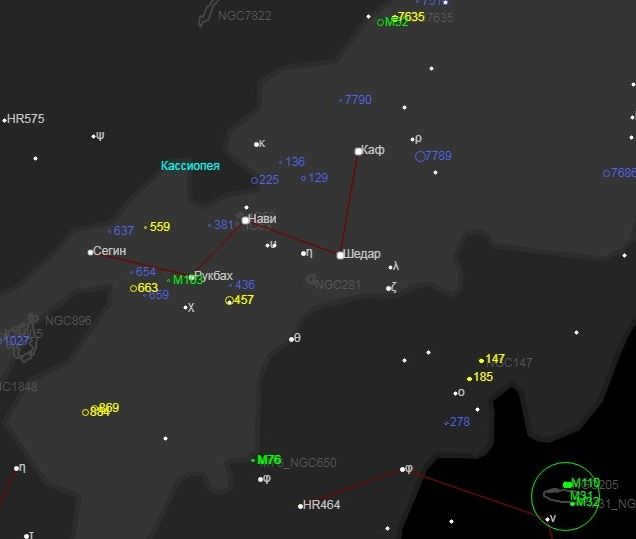
There are other celestial objects within the Cassiopeia constellation, although they are not as bright and mostly consist of scattered star clusters.
The presence of a gray color indicates the presence of nebulae, but observing them requires a high-quality telescope and a completely dark sky far from light pollution caused by cities.
For more information about these celestial objects, it is recommended to consult an online star map, which can be found in the left-hand menu.
Nikolay Kurdyapin, kosmoved.ru
How far are the zodiacal constellations?
Zodiacal constellations are formations of stars in the night sky, but the individual stars themselves are not arranged in specific shapes in outer space. The distance between our planet and the stars within a constellation can vary, sometimes spanning tens of light years, which results in stars being scattered randomly throughout the galaxy.
When we observe the night sky, we are only seeing two dimensions, lacking the depth that exists in reality. However, the zodiacal constellations continue to serve as landmarks and ignite our imagination. They assist astronomers in their quest to discover planets, comets, and other celestial phenomena, as they provide a useful reference point in the night sky.
Explore our online models to observe all 13 zodiacal constellations in the sky, complete with information about the brightest stars within each constellation.
Seasonal Constellations:
This captivating worksheet offers a unique way to comprehend the topic, allowing you to grasp the material in an enjoyable manner. The utilization of worksheets empowers every student to contribute towards achieving the learning objectives, explore potential solutions, and demonstrate independence. Aligned with FSES.
This engaging worksheet is designed to enhance understanding of the subject matter and provide an entertaining way to study. The utilization of worksheets enables every student in the class to actively participate in achieving learning goals, explore potential solutions, and demonstrate independence. Aligned with the FSES curriculum.
Author’s worksheets
Here is a worksheet from the Infoworks project featuring tasks on the subject of “Constitution Day” for students in grades 1-3.
Presented is a worksheet from the Infoworks project that includes tasks related to “Constitution Day” for students in grades 5-7.
Other worksheets you may like
This worksheet is intended for students to work on independently in the classroom or at home. It focuses on the topic of “Forces” and allows students to explore and learn about different forces.
Discussion about important events and activities is crucial in education. As the new school year begins, schools and colleges nationwide have implemented a new practice of starting every Monday with a class discussion. This allows students to share their thoughts, opinions, and experiences, fostering a sense of community and enhancing their communication and critical thinking skills.
Feedback
Embrace a creative approach to learning!
Our collection of instructional resources and exercises serve as reliable aids for educators, parents, and tutors. These materials have been developed by experienced teachers and are suitable for both one-on-one and group lessons.
Worksheets provide a fresh and convenient method to captivate children’s interest in the lesson’s subject matter, while also helping them reinforce what they’ve learned and assess their comprehension. Each worksheet features engaging and unconventional tasks, as well as supplementary materials related to the lesson’s topic.
Our website offers worksheets catered to students in grades 1-11, as well as preschoolers. Simply select, download, and implement activities that will delight and engage children!













